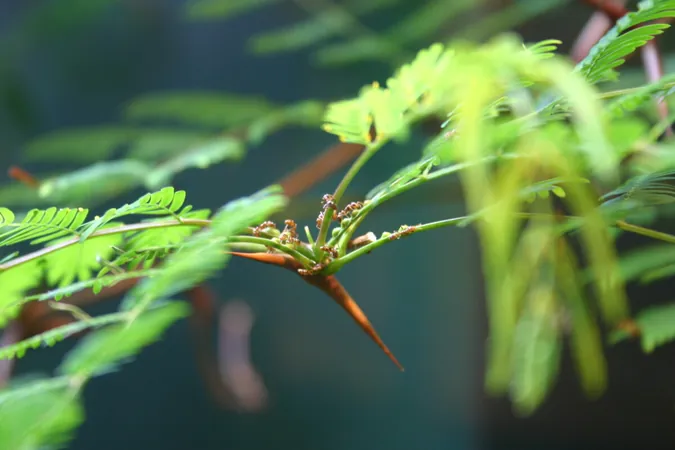
Exploring the Secret Life of Venom: It's Not Just for Animals!
2025-04-02
Author: Jia
Exploring the Secret Life of Venom: It's Not Just for Animals!
A groundbreaking study reveals that venom isn't exclusive to animals; it permeates the entire living world, encompassing plants, fungi, bacteria, and even viruses. This eye-opening research, spearheaded by ecologist William Hayes from Loma Linda University in the U.S., challenges longstanding beliefs about the nature and origins of venom.
While teaching a class on venom biology, Hayes and his students began to delve into the definitions of venom beyond the animal kingdom. “The more we investigated, the clearer it became that venom is not a trait solely of animals; it has evolved as a fascinating adaptation across diverse life forms,” Hayes stated.
So, what exactly defines venom? According to the study, all venomous organisms share a common thread: the ability to introduce toxins into other organisms via specialized structures, such as fangs or spines. However, there are various strategies employed by different species. For instance, jellyfish and anemones generate toxins within specialized stinging cells, while scorpions and snakes produce venom in designated glands, delivering it through fangs or stingers.
Intriguingly, certain species have perfected the art of 'borrowing' toxins. The boxer crab (Lybia tessellata), for instance, carries venomous sea anemones on its claws, using them as a defensive mechanism while the anemones receive sustenance in return. Similarly, some marine worms store toxins produced by bacteria, which they efficiently inject into their prey or rivals through wounds.
But the world of toxins doesn’t stop at the ocean's edge. Among plants, the parasitic mistletoe utilizes specialized roots to infiltrate another plant's tissues, releasing venom-like toxins that siphon nutrients from its host, showcasing a cunning survival strategy.
Even more fascinating are 'ant-plants', which engage in a mutualistic relationship with stinging ant colonies. These plants provide food and shelter for the ants, who in turn defend them against predators. Remarkably, these plants can even adjust their ant populations based on perceived threats, akin to how animals modulate venom levels during a sting or bite, a phenomenon researchers refer to as 'venom-metering'.
Timothy Jackson, co-head of the Australian Venom Research Unit at the University of Melbourne, commended the study for shedding light on toxin delivery mechanisms across a wide array of non-animal organisms. He emphasized that while some toxin researchers might resist classifying plants, fungi, and microbes as venemous, it’s imperative that our understanding of nature's complexities evolves to embrace this rich array of biological adaptations.
This study opens the door to a deeper understanding of venom’s role in ecology and evolution. As researchers continue to unravel these connections, who knows what other venomous surprises nature might have in store for us? What are your thoughts on the non-animal world of venom? Let us know!


 Brasil (PT)
Brasil (PT)
 Canada (EN)
Canada (EN)
 Chile (ES)
Chile (ES)
 Česko (CS)
Česko (CS)
 대한민국 (KO)
대한민국 (KO)
 España (ES)
España (ES)
 France (FR)
France (FR)
 Hong Kong (EN)
Hong Kong (EN)
 Italia (IT)
Italia (IT)
 日本 (JA)
日本 (JA)
 Magyarország (HU)
Magyarország (HU)
 Norge (NO)
Norge (NO)
 Polska (PL)
Polska (PL)
 Schweiz (DE)
Schweiz (DE)
 Singapore (EN)
Singapore (EN)
 Sverige (SV)
Sverige (SV)
 Suomi (FI)
Suomi (FI)
 Türkiye (TR)
Türkiye (TR)
 الإمارات العربية المتحدة (AR)
الإمارات العربية المتحدة (AR)